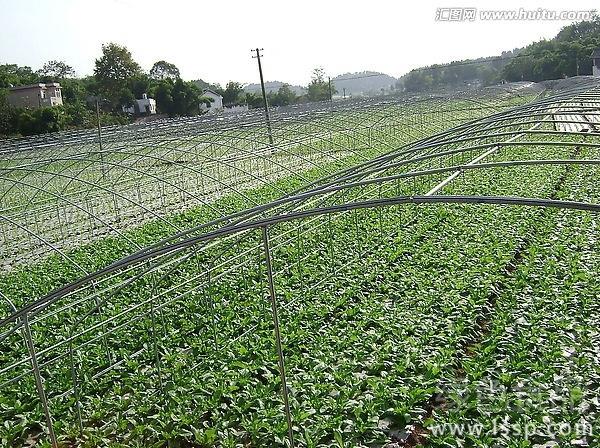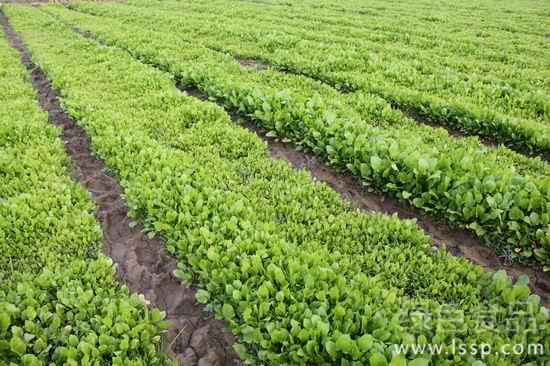Harm of continuous overcast and rainy weather to vegetables in greenhouse and its control countermeasures

Greenhouse vegetables
From a meteorological point of view, 5 or more days of continuous rainfall, precipitation more than 15 days, rainy and rainy, sunny weather, called continuous rain. The following is a brief overview of the effects of overcast and rainy weather on vegetable production and its countermeasures are as follows:
1. Prevent waterlogging on the border: in the continuous low temperature, overcast and rainy weather, the soil moisture is too much, so that the relationship between water and air in the soil is out of balance, the root activity is poor, and the ability of absorbing fertilizer and water is affected. Therefore, the drainage ditch should be dug and the water should be drained to prevent waterlogging on the border surface.
2. Strengthen the coverage: buckle the small arch shed in the greenhouse, use the thin bamboo pole as the arch frame, cover the film at night, cover the grass grass on the film; cover the plastic film in the greenhouse, it can increase the temperature and keep the humidity. Plastic film is used as an apron at the bottom of the shed, which can significantly reduce the invasion of cold air at the bottom; at the same time, pay attention to blocking the cracks everywhere to minimize the gap heat dissipation.
3. Temporary heating: when the daytime temperature in the greenhouse is lower than 15 ℃ and the night temperature is lower than 5 ℃, cold injury or freezing injury may occur. Temporary heating measures should be taken at night to replenish heat artificially. Placing several briquettes in the shed can increase the temperature in the shed. However, attention should be paid to prevent carbon dioxide poisoning. When adding briquettes and taking out the coal stove, the greenhouse should be ventilated first and then enter the people. Incandescent lamp is used to supplement light in the greenhouse to enhance photosynthesis, improve plant resistance and ensure the safety of seedlings through the winter. Crops have the strongest ability to absorb red light and blue-purple light, and the light sources can be fluorescent lamps, high-pressure mercury lamps, arc xenon lamps and so on. Three fluorescent lamps of 40 watts were combined and irradiated at a height of 45 centimeters from the seedling, or 80 centimeters away from the seedling with a 100-watt high-pressure mercury lamp.
4. Management after low temperature damage: after suffering from different degrees of cold injury or freezing injury, or when it is even cloudy for a long time, a sunshade is built in the shed to prevent frozen vegetables from being directly exposed to sunlight, resulting in tissue dehydration and shrinkage and loss of vitality. Before uncovering the grass on a sunny day, you can spray some water on the leaves to heat up slowly; the grass should also be opened gradually, so that the seedlings can gradually see light, so as to avoid the phenomenon of "flashing seedlings".
5. timely prevention and control of diseases: greenhouse vegetables should focus on the management of temperature and humidity and the proportion of nitrogen, phosphorus and potassium fertilizers, especially not partial application of nitrogen fertilizer, and pay attention to the application of organic fertilizer. Continuous overcast and rainy weather, low temperature and high humidity in the shed, we should pay attention to the occurrence and spread of vegetable and melon blight and gray mold.
- Prev

Guidelines for the use of pesticides to promote the balanced cultivation of traditional Chinese Medicinal Materials
Guidelines for the use of pesticides to promote the balanced cultivation of traditional Chinese Medicinal Materials
- Next

How to raise succulent plants
How to raise succulent plants
Related
- Fuxing push coffee new agricultural production and marketing class: lack of small-scale processing plants
- Jujube rice field leisure farm deep ploughing Yilan for five years to create a space for organic food and play
- Nongyu Farm-A trial of organic papaya for brave women with advanced technology
- Four points for attention in the prevention and control of diseases and insect pests of edible fungi
- How to add nutrient solution to Edible Fungi
- Is there any good way to control edible fungus mites?
- Open Inoculation Technology of Edible Fungi
- Is there any clever way to use fertilizer for edible fungus in winter?
- What agents are used to kill the pathogens of edible fungi in the mushroom shed?
- Rapid drying of Edible Fungi

